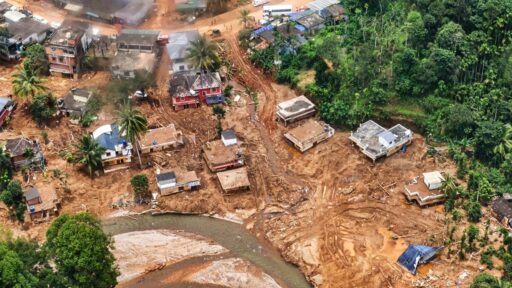
In late July 2024, Kerala’s Wayanad district was struck by devastating flash floods and landslides, particularly in the villages of Punjirimattom, Mundakkai, Chooralmala, and Vellarimala. Torrential monsoon rains triggered massive mudslides in the early hours of July 30, leading to widespread destruction.
Over 250 lives were lost, nearly 400 people injured, and 47 remained unaccounted for. Around 10,000 residents were displaced, many losing homes, livestock, and entire livelihoods in a matter of hours. This was one of the most tragic natural disasters Kerala witnessed in recent years.
Emergency teams including the NDRF and state forest and rescue units mobilized quickly. Search operations continued for days, but the scale of devastation remained overwhelming. The affected regions faced roadblocks, damaged infrastructure, and severe disruption of power and communication.
Why This Disaster Mattered
-
Environmental Triggers: Unchecked hill cutting and deforestation on steep slopes contributed to soil erosion. Heavy and persistent rainfall overwhelmed terrain stability.
-
Rescue Challenges: Rugged geography complicated evacuation. Many communities remain inaccessible even after a week.
-
Infrastructure Loss: Hundreds of homes, road segments, and farms were destroyed. Government estimates placed damages at over ₹1,200 crore.
-
Climate Signals: Meteorologists linked the disaster to intensifying monsoon patterns and local climate shifts, warning of recurring landslide risk zones.
Impact & Long-Term Implications
Among the most affected were tribal and rural families dependent on small-scale farming and highland agriculture. Survivors have appealed for long-term rehabilitation, land rights, and safe housing. The disaster renewed demands for regulated land planning, slope stabilization, and scientific assessment before construction in these sensitive zones.
This tragedy stands as a stark reminder of how climate change, poor environmental planning, and inadequate disaster resilience infrastructure can combine into human catastrophe.